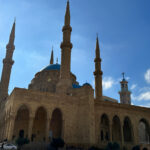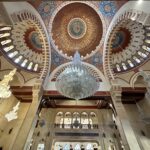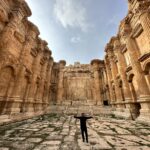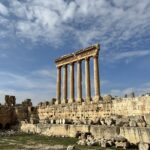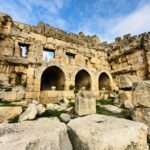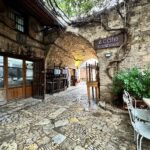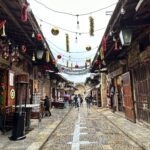Beirut is over 5000 years old making it one of the oldest cities in the world. It used to be known as “The Paris of the East”. The city is known for its architecture, food, souks and nightlife. Beirut was in my bucket list for over 4 years. The political turmoil and then Covid-19 had kept me away for some time, but I was glad that I finally made it to Beirut in December 2022.
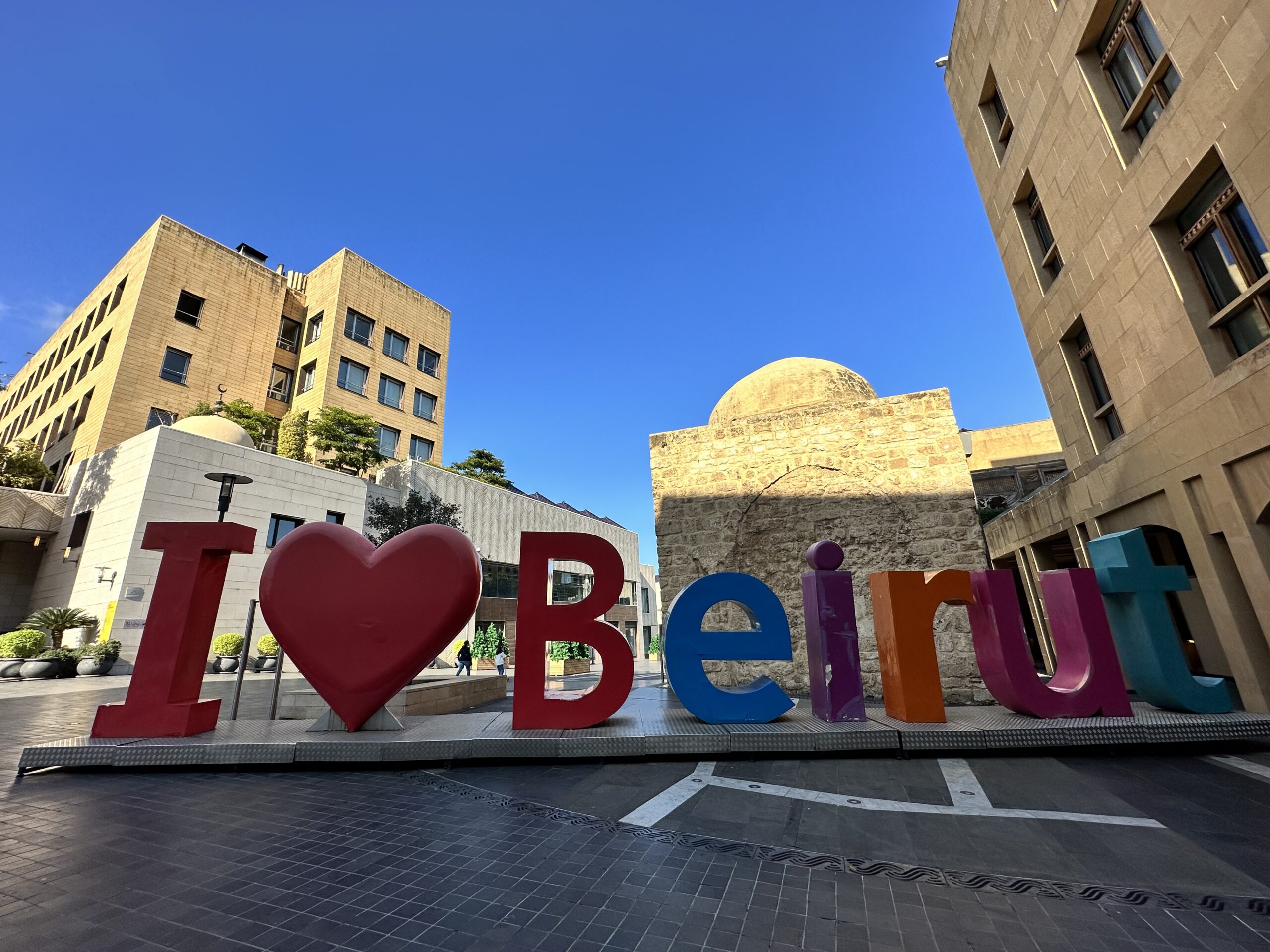
Day 1: Beirut City Tour
Upon arriving in Beirut, take some time to explore the city’s historic center. Start at the Martyr’s Square, see the Clocktower, the Lebanese parliament building and then walk to the Al-Amine Mosque. Next visit Saint George Maronite Cathedral and from there head to the ruins of the center of the Roman city of Berytus and then a photo stop at “I love Beirut” Sign.
Take a walk along the Zeituna Bay all the way to the the farmer’s market (on Saturdays only)
Visit Raouche (Pigeon Rock). It is known for its three-dimensional scenery at sunset. It consists of two stones standing on the Mediterranean Sea on the edge of the city. The rock has wavy stripes formed by sea water, one of which is shaped like an arch.
In the evening head to the Gemmayzeh neighborhood, known for its lively bars and restaurants. Grab a drink at one of the many rooftop bars, or try some traditional Lebanese food at a local restaurant.
Day 2: Beit al-Din Palace, Anjar and Baalbek
The palace was built by Emir Bashir Shihab II, the ruler of the Mount Lebanon Emirate, between 1885 and 1891. It was used as the summer residence of the Emir and his family, and was also used for official functions and receptions. Today, the palace is open to the public and is a popular tourist attraction.
Visitors to the Beiteddine Palace can take a guided tour of the palace’s many rooms, including the throne room, the royal bedchamber, the harem quarters, and the reception halls. The palace also has a number of ornate courtyards and gardens, which are a great place to relax and take in the beautiful surroundings.
Anjar is an ancient city located in the Bekaa Valley in eastern Lebanon. The ruins of Anjar are a popular tourist attraction, offering a glimpse into the city’s past. Visitors can walk through the well-preserved streets and buildings, and see the remains of the palace, the mosque, and the baths. The site also has a museum, which displays a collection of artifacts and artifacts from the Umayyad period.
In addition to its historical and cultural significance, Anjar is also known for its beautiful surroundings. The city is located in the Bekaa Valley, which is known for its fertile land and abundance of agriculture. Visitors to Anjar can enjoy the peaceful countryside and take in the stunning views of the valley.
From Anjar head to Baalbek which is another ancient city located in the Bekaa Valley. It is home to some of the most impressive and well-preserved ancient ruins in the region, including the Temple of Baalbek, a UNESCO World Heritage Site.
The Temple of Baalbek is a complex of ancient Roman temples dedicated to the Phoenician gods Baal, Heliopolis, and Jupiter. The temple was built in the 1st century BC, and is considered one of the finest examples of Roman architecture in the world. The temple’s main entrance is adorned with six massive columns, each over 20 meters tall.
In addition to the Temple of Baalbek, the city also has a number of other ancient ruins, including the Temple of Bacchus, the Temple of Venus, and the Temple of Jupiter. Visitors can explore the ruins and learn about the city’s rich history and cultural heritage.
Baalbek is also known for its beautiful surroundings. The city is located in the Bekaa Valley, which is known for its fertile land and abundance of agriculture. Visitors to Baalbek can enjoy the peaceful countryside and take in the stunning views of the valley.
Day 3: Jeita Grotto, Harissa and Byblos
Start the day with a visit to Jeita Grotto, which is a series of underground caves and waterfalls located in the Nahr al-Kalb valley, about 20 kilometers north of Beirut. It is a popular tourist attraction in Lebanon and has been a UNESCO World Heritage Site since 2012.
The Jeita Grotto is actually two separate caves: the upper cave and the lower cave. The upper cave is a series of underground galleries and chambers that can be accessed by a series of stairs and walkways. It is known for its beautiful stalactites and stalagmites, as well as its crystal-clear water.
The lower cave, on the other hand, is a series of underground waterfalls that can be accessed by boat. It is known for its stunning views and the sound of the waterfalls echoing through the cave.
Visitors to Jeita Grotto can take a guided tour of the upper and lower caves, which typically lasts about an hour and a half. The tour includes a walk through the upper cave and a boat ride through the lower cave.
Overall, Jeita Grotto is a must-see attraction for anyone visiting Lebanon. Its beautiful caves and waterfalls make it a unique and memorable experience.
Next head to Harissa, which is a town located in the Keserwan District of the Mount Lebanon Governorate, about 15 kilometers north of Beirut. It is known for its beautiful location and its iconic statue of the Virgin Mary, which sits atop a hill overlooking the Mediterranean Sea.
The town of Harissa is home to a number of historical and cultural attractions, including the Harissa Cable Car, which offers stunning views of the town and the surrounding area. Visitors can also visit the Notre Dame du Liban, a large basilica dedicated to the Virgin Mary, which sits on top of the hill where the statue is located.
In addition to its cultural attractions, Harissa is also known for its beautiful location. The town is situated on a hill overlooking the Mediterranean Sea, offering stunning views of the sea and the surrounding mountains. It is a great place to take a walk, have a picnic, or just relax and take in the beautiful surroundings.
Byblos, also known as Jbeil, is a coastal city located in the Mount Lebanon Governorate of Lebanon, about 30 kilometers north of Beirut. It is known for its rich history, beautiful beaches, and charming old town.
Byblos has a long and storied history, dating back to the Phoenician period. It was an important port and commercial center in ancient times, and has been occupied by various civilizations throughout its history, including the Romans, the Crusaders, and the Ottoman Turks.
Today, Byblos is a popular tourist destination, known for its charming old town, which is home to a number of historical sites and landmarks. These include the Byblos Castle, a Crusader castle built in the 12th century, and the Saint John-Marc Cathedral, a medieval church that now serves as a museum.
In addition to its historical sites, Byblos is also known for its beautiful beaches and lively nightlife. The city has a number of beaches, including the popular Al-Mina beach, which is popular with locals and tourists alike. In the evening, the old town comes alive with a variety of bars, clubs, and restaurants, making it a great place to spend an evening out.
Overall, a visit to Byblos is a must for anyone visiting Lebanon. Its rich history, beautiful beaches, and charming old town make it a unique and memorable destination.


